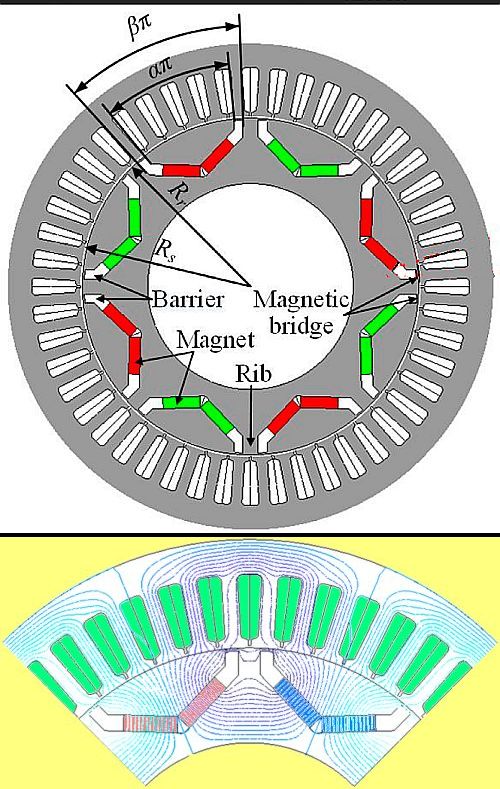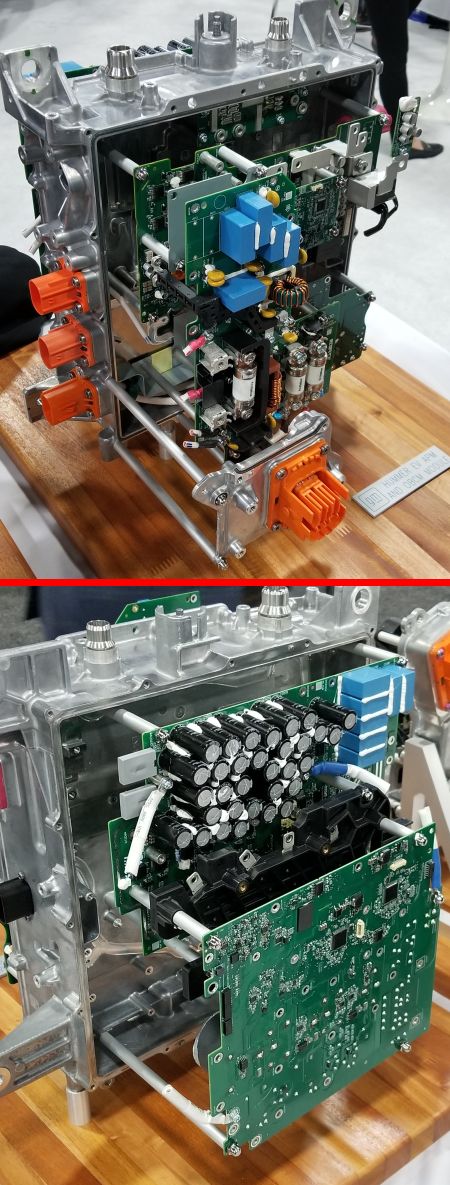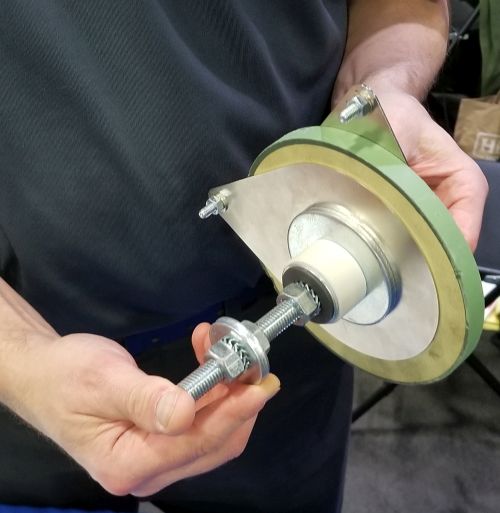The IEEE’s ECCE 2022 event took place in Detroit recently and featured 856 peer-reviewed technical papers, 17 special sessions, and an  exhibit expo. We toured the exhibits which were heavily oriented toward automotive power electronics. Here are some of the impressions we came away with as we walked the aisles.
exhibit expo. We toured the exhibits which were heavily oriented toward automotive power electronics. Here are some of the impressions we came away with as we walked the aisles.
Automakers move toward IPM motors
Both Ford and GM had ECCE booths highlighting EV technology. ECCE attendees were able to get a good look at the all-electric GMC Hummer and the Ford F-150 Lightning. More important, both automakers showed cut-downs of a couple electric motors used in both vehicles. Both were synchronous interior permanent magnet (IPM) motors, interesting because PM motors were primarily surface-magnet devices until the EV wave got rolling.



As a quick review, IPM motors have the permanent magnets imbedded into the rotor itself. The location of the permanent magnets make IPM motors mechanically sound and suitable for operating at high speeds. These motors also are defined by their relative high magnetic saliency ratio. Magnetic saliency describes the relationship between the rotor’s main flux inductance and the main torque-producing inductance. High magnetic saliency gives IPM motors the ability to generate torque by taking advantage of both the magnetic and reluctance torque components of the motor. The power-versus-speed curve for ordinary surface PM motors is roughly hyperbolic, rising to a region of quasi-constant power over a narrow speed range, then falling off. IPM motors, in contrast, provide a much broader region of more or less consistent torque. Thanks to a technique called field weakening, designers can apply current to modify performance. Field weakening essentially involves tuning the magnetic field of the stator to partially oppose the effect of the permanent magnets.
A look at automaker power electronics
Both Ford and GMC showed some of the power electronic modules found in their production Hummer and F-150 Lightning vehicles. Perhaps the most noteworthy thing about all of the automaker electronics was that they were all entirely silicon technology–no wide-bandgap transistors to be found. However, the Ford and GMC personnel we spoke to did say the automakers are studying the use of SiC and GaN devices.



How to plug a TV set into a Ford F-150 Lightning

Maybe the only production SiC component at ECCE

Is this the look of future EV truck axles?

Interesting student papers we saw








Leave a Reply